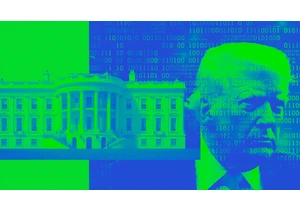Tokenization has long been a buzzword for crypto enthusiasts, who have been arguing for years that blockchain-based assets will change the underlying infrastructure of financial markets.
The technology is seen as rapidly increasing in coming years, especially in the U.S., helped by the passage of three new bills. President Donald Trump’s administration has eased regulation of the broader cryptocurrency industry, paving the way for a boom in the valuation of companies in the sector and the rapid growth of crypto-related securities.
However, the growth of the market for tokenized assets has been far slower than expected in recent years, with many projects still in their infancy or not yet live.
How does tokenization work?
The term “tokenization” is used in a variety of ways. But it generally refers to the process of turning financial assets—such as bank deposits, stocks, bonds, funds, and even real estate—into crypto assets.
This means creating a record on a digital ledger blockchain that represents the original asset. These blockchain-based assets, or “tokens,” can be held in crypto wallets and traded on the blockchain, just like cryptocurrencies.
Where do stablecoins come in?
Stablecoins can be seen as an example of tokenization. They are a type of cryptocurrency designed to maintain a constant value by being pegged to a real-world currency, typically the U.S. dollar. The issuer holds one U.S. dollar in reserve for every dollar-pegged crypto token it creates.
Stablecoins are blockchain-based tokens acting as a proxy for an asset that already exists outside the blockchain.
They allow people to move money across borders without interacting with the banking system. While critics say that this makes them useful for criminals who want to avoid banks’ anti-money-laundering checks, stablecoin issuers say that they are a lifeline for people in countries without a developed payments system.
Are tokenized assets taking off?
Yes and no. Stablecoins have grown in recent years, with the market estimated to be worth about $256 billion, according to crypto data provider CoinMarketCap, and expected to touch $2 trillion by 2028, according to Standard Chartered.
But banks have talked for years about creating tokenized versions of other types of assets—which they say will make trading more efficient, faster, and cheaper—and those “tokens” have struggled to gain traction.
While there have been individual issuances, there is not a liquid secondary market for these kinds of assets.
One impediment to trading traditional assets via blockchain is that banks are working on their own private networks, making it difficult to trade across platforms.
What are the pros of tokenization?
Some proponents of the crypto industry have said tokenization can improve liquidity in the financial system. Illiquid assets like real estate could be traded more easily if they are broken up into small digital tokens.
It is also expected to improve access to asset classes that are typically out of reach of smaller investors by creating a cheaper entry point.
Which companies are interested in tokenization?
Some major global banks, including Bank of America and Citi, have said they could explore launching tokenized assets, including stablecoins.
Asset manager BlackRock is also doubling down on the tokenization boom, and has highlighted its ambition of becoming the largest cryptocurrency manager in the world by 2030.
Coinbase, the largest U.S. crypto exchange, is seeking permission from the Securities and Exchange Commission to offer “tokenized equities” to its customers.
How does new regulation help tokenization?
Since stablecoins themselves are tokens and seen as one of the biggest drivers of the growth of tokenization, the new stablecoin law will end up boosting the proliferation of tokenization, experts say.
The new market structure bill, known as the Clarity Act, is expected to establish a clear framework that could enable stablecoins and other crypto tokens to become more widely used.
What are the risks?
Some analysts say the hype around tokenization might be premature and caution that the rapidly growing crypto ecosystem could experience near-term turbulence due to the potential risks of a big decline in prices.
European Central Bank President Christine Lagarde has warned that stablecoins pose risks for monetary policy and financial stability.
Some critics of the industry warn that the frenzy around the new technology could introduce new systemic risks, especially in the absence of stringent regulation. They also say there is no reason why the blockchain should be any more efficient than the electronic ledgers and trading systems already used in financial markets.
Buyers of third-party tokens, which are issued by unaffiliated third parties—such as crypto exchange Kraken—that have custody of securities, could be exposed to counterparty risks, and regulators are sounding notes of caution.
Earlier in July, Hester Peirce, a commissioner at the Securities and Exchange Commission who has frequently spoken positively about cryptocurrency, said tokenized securities would not be able to circumvent existing securities laws.
More than half of the world’s U.S. dollar stablecoins are issued by a single company, Tether, which says it manages $160 billion in reserves, but has not undergone a financial audit.
—By Anirban Sen, Reuters
Additional reporting by Chris Prentice and Elizabeth Howcroft.
Connectez-vous pour ajouter un commentaire
Autres messages de ce groupe

Good news: Vine might be coming back. Bad news: in AI form, courtesy o

A stable “release” version of Apple’s iOS 26 is due in September, but you can now try an in-progress version, called the public beta. It previews a revamped interface and new fea


">Tear a tanktop in half today for Terry Bollea, the entertainer better known as Hulk Hogan, who has died at age 71.
Though he was

Welcome to AI Decoded, Fast Company’s weekly newsletter that breaks down the most important news in

The data nerds are fighting back.
After watching data sets be altered or d

Chris Guillebeau spent years racing against time, visiting all 193 countries before he turned 35, hosting annual gatherings of thousands, and writing bestsellers like The $100 Startup. Bu
